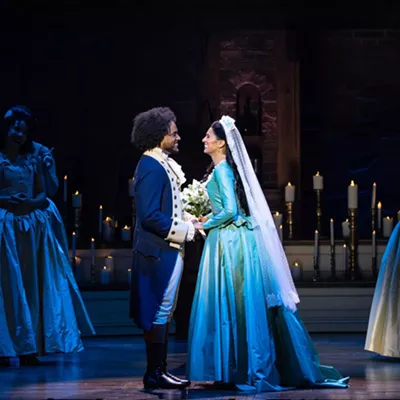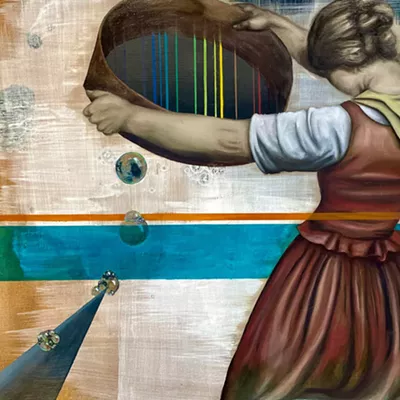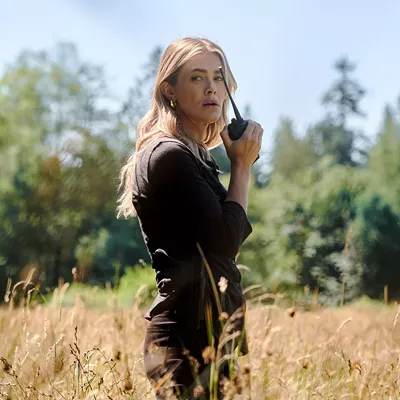Right away, turning The Lion King into a musical has a problem: lions. Lions — plus, hyenas and giraffes and elephants — are pretty darn integral to The Lion King.
You can’t just ditch the whole animal conceit, swapping them out with human equivalents, not with a number like “Circle of Life” so prominent. But real lions, sadly, are too temperamental to sit through voice lessons. Mascot outfits, a la Disney on Ice, can’t convey real emotion, and the Cats treatment — humans prancing around in catlike makeup and skintight furry costumes — inspires terror more than awe.
It would take some sort of creative genius to somehow solder together live-action and cartoon, animal and human. Michael Curry is that sort of creative genius.
“You can’t replace humans on the Broadway stage,” he says. He’s the theatrical designer and puppet creator, who, along with Lion King musical creator Julie Taymor, found the solution.
“Nants ingonyama! Bagithi baba!” trumpets out across the audience at the outset of The Lion King, proclaimed by a half-human, half-female baboon named Rafiki who’s decked in traditional African tribal garb. And then, with the stage lit sunrise-orange, out come Curry’s creations.
First comes a giraffe, wobbly and spindly legged — each an actor gracefully working four stilts. Then the cheetah enters, sleek and graceful. Its hind legs are the puppeteer’s, while the puppeteer moves the front legs and head using a rod. The zebra dancer high-steps and, somehow, the zebra’s hind legs follow behind. Other dancers bound across the stage, a gazelle facsimile attached to their heads and each arm. Multiple birds perch atop a dancers’ heads, flapping their wings as the dancers flap their arms.
And then, there’s an elephant trudging down the aisle, worked by four puppeteers, one tucked inside each elephant leg.
As the music builds to a crescendo, the whole human/puppet ensemble pauses, and the spotlight shines on one: A little lion cub named Simba. He yawns.
So with that, weaving the humans and the animals into one form, “making the animals human and making the humans animals,” Curry simultaneously solves the problem of how to portray animals on Broadway, and proclaims the very message of ‘Circle of Life”: Humans, animals, plants are all connected. We’re all a part of each other.
Designing the hundred-plus unique puppets of Lion King took Curry a full year in 1996. Curry sat down with Taymor — she “rarely sits down,” Curry corrects — to sculpt out a vision. It had to retain the African aesthetic. And it had to represent the animal, rather than be an exact facsimile.
“You don’t try to take their taxidermy,” Curry says. “We take their spirit… We almost took a mythical approach to animals.”
Curry, already an expert in animal anatomy, studied tapes, books and diagrams. He went on zoo trips and African safaris, absorbing how giraffes swayed, elephants clomped and cheetahs strutted.
“We literally wanted to start with dances, because that’s what Julie and I both loved and do,” Curry says. “Then we started taping cardboard to them.”
Some animals, like the snake, never made it to stage. “I didn’t want to have a contortionist out there,” Curry says. “It was like a Noah’s Ark story… the poor snake was left behind.”
The costumes for the main characters, especially for a multi-dimensional villain like Scar, went through prototype after prototype.
“We made a lot of crap,” Curry says. “We had one that was voice activated, sensors in your lower jaw would trigger, moving the jaw of a lion mask above your head… It was too magical.”
Ultimately, Simba and Scar became masks — large pieces of ornate African art that sit atop the actors’ heads, framing their faces like a cowl or a mane. “The actors transfer the emotion up through the mask,” Curry says.
Playgoers swear to Curry, he says, that they saw the mask’s eyes move.
Timon and Pumbaa, meanwhile — the meerkat and warthog — became elaborate puppets attached to the puppeteer’s front. Timon — the most demanding role for both actor and puppet designer, Curry says — uses more than 19 pivots.
Twelve years later, Curry still sometimes sits in the audience, watching the faces of those experiencing the puppetry and pageantry of The Lion King for the first time.
“I get thrills,” Curry says, “I like to see the faces light up… I know what’s coming down the aisle.”
Puppet creator Michael Curry















